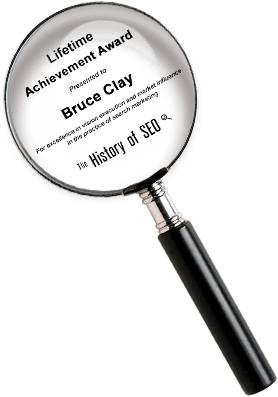How do I prioritize SEO audit tasks for quick wins?

- Overview
- What I Think
- Deep Dive: Prioritizing for Maximum Early Impact
- 24-Step Action Plan
- Quick Solutions
- About Us
Overview
Doing an SEO audit can be quite overwhelming. You run the scan, and suddenly you get back 142 “urgent” issues to deal with. Where do you even begin? If you’re not careful, you’ll end up chasing fixes that look important but won’t move the needle.
That’s why prioritization matters.
Quick wins are out there — but they’re not always the loudest alerts on your dashboard. The key is understanding which issues block visibility, traffic, or conversions right now versus those that can wait.
We’ll show you how to assess effort versus value, align fixes with business goals and get early wins that earn trust and budget. Progress builds momentum, and momentum keeps your SEO strategy alive.
What I Think
I’ve seen teams drown in audit reports, struggling to pick a starting point. It usually helps to focus on what’s doable and what’ll actually make a difference. Starting with a few quick wins gets people on board and builds momentum for tackling the bigger stuff.
I’ve watched companies transform their roadmaps once they adopted a simple impact-vs-effort matrix. They stop debating minor tweaks and instead focus on fixes that move the needle fastest. That early momentum builds trust — the kind you need to move into deeper, more strategic SEO work.
In my experience, prioritization comes down to clarity, not tools. When everyone knows what “high impact” actually means, you don’t waste time debating. You just get to work.
Deep Dive: Prioritizing for Maximum Early Impact
Effective quick-win prioritization starts by categorizing audit findings on an impact-versus-effort grid. Plot each “critical” issue on two axes: expected traffic uplift or conversion bump versus estimated implementation effort. By visually mapping these “quick win SEO” opportunities, you immediately see which tasks deliver the greatest return for the least lift.
Next, validate your initial ratings with live data. Check historical organic performance for pages affected by each issue and use that insight to refine your impact scores. In many cases, early traffic changes after small fixes confirm which items truly deserve top priority.
Coordinate with your technical and content teams to estimate realistic timelines. A fix that seems “low effort” on paper may require complex approvals. It helps to talk through anything that could slow things down. Is someone waiting on a sign-off? Is there a blocker no one’s flagged yet? You don’t want to get halfway into the work and realize you missed something simple.
Pick a couple of tasks that feel doable and useful. Assign each one to someone specific, agree on deadlines, and keep it tight. Avoid sprawling timelines or “maybe” tasks — just things you know you can knock out.
Once they’re done, check what actually happened. Did traffic move? Did something shift? Don’t guess — look. Dashboards help, but honestly, even a quick gut check with your KPIs can tell you if the work mattered.
If it worked, say so. Let your team and stakeholders know. Those small wins? They build trust. And that trust makes it easier to take on the next round of work.
Finally, continuously revisit your impact-effort matrix. As you log new data and refine your estimates, you’ll identify fresh “quick win SEO” tasks and avoid stagnation. This iterative cadence ensures your audit task management never goes stale.
24-Step Action Plan
- Export all “critical” audit findings into a spreadsheet
- Create an impact-vs-effort template with two axes
- Score each issue on expected traffic or conversion impact
- Estimate required effort for each recommendation
- Plot issues on the matrix and highlight the top quadrant
- Verify impact estimates using historical performance data
- Adjust any scores based on real traffic insights
- Identify page-level dependencies for technical fixes
- Confirm effort ratings with development and content teams
- Select the top three quick-win tasks
- Assign a single owner to each quick win
- Schedule a one-week sprint for implementation
- Document each task’s scope and deadline in your PM tool
- Reframe technical issues as site-health items for IT
- Execute the sprint and complete all three tasks
- Monitor KPI dashboards for immediate signals
- Analyze performance shifts within 48 hours
- Share a concise report on early results
- Update your impact-effort matrix with new data
- Identify the next batch of quick wins
- Plan the next sprint based on what worked. Take a minute to review what made a difference — and what didn’t. Use that to decide what’s worth focusing on next.
- Call out any wins
- Pass the mic. Let different team members lead a sprint now and then. It builds confidence and spreads knowledge across the team.
- Repeat the sprint cycle continuously
Ready to see fast SEO results?
Contact us for help on prioritizing your SEO audit tasks today.
Quick Solutions
- How do I secure top-level support for SEO as a strategic initiative?
- How do I ensure clients follow through on our SEO recommendations?
About Us
Bruce Clay Inc. has been shaping the SEO industry since 1996 — long before most firms in the space existed. For more than two decades, we’ve helped set the standard, guiding businesses with strategies built on experience, innovation and results.
We’re a team of award-winning consultants who turn in-depth SEO audits into real, actionable outcomes. Every recommendation we make ties directly to your business goals — because strategy means nothing if it doesn’t serve the bigger picture.
We blend proprietary tools with open-source solutions to build smart, efficient workflows — and we do it all transparently.
26,000+ professionals, marketers and SEOs read the Bruce Clay Blog
Subscribe now for free to get:
- Expert SEO insights from the "Father of SEO."
- Proven SEO strategies to optimize website performance.
- SEO advice to earn more website traffic, higher search ranking and increased revenue.

Comments are closed








